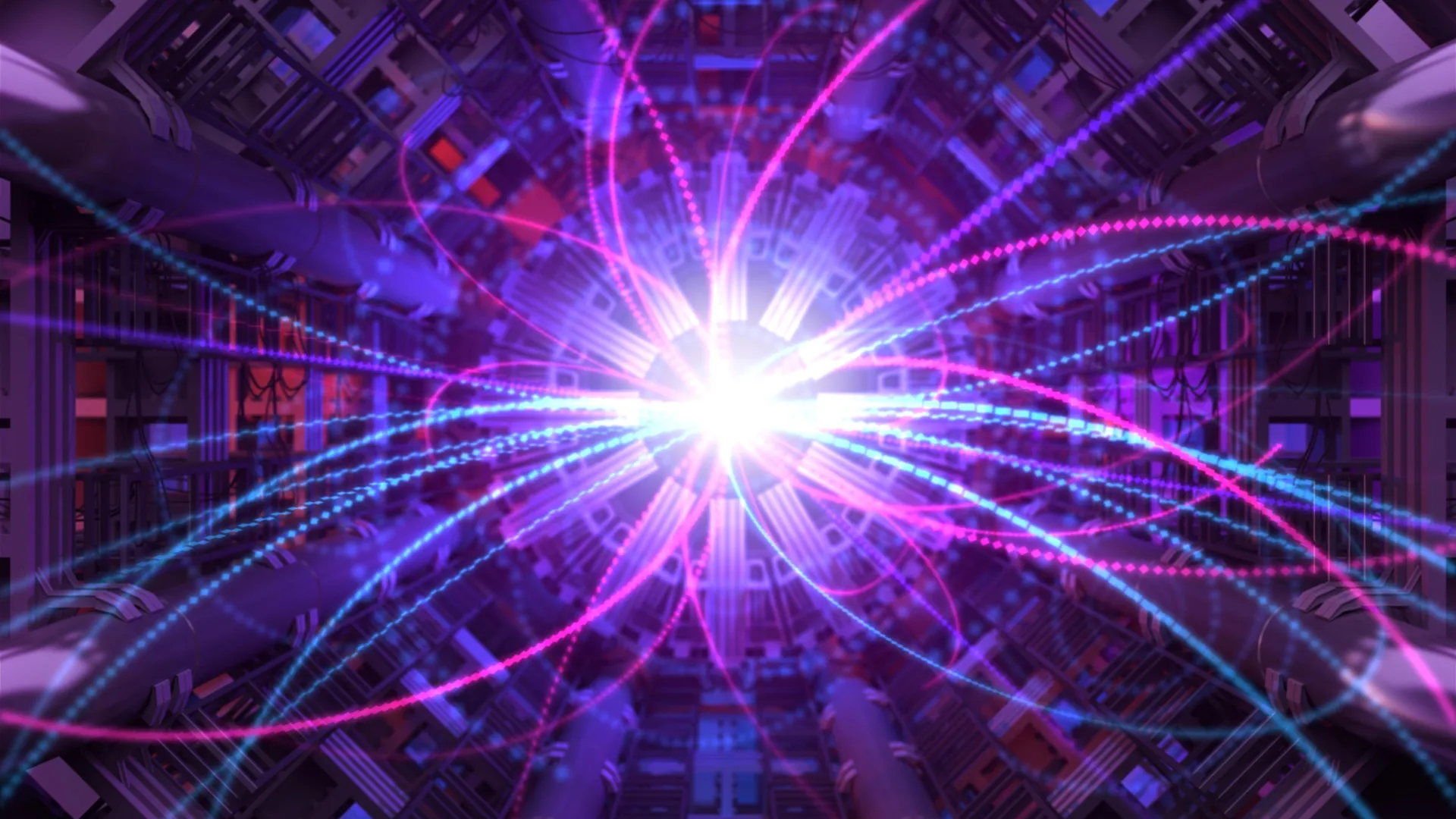The Higgs boson just revealed a new secret at the Large Hadron Collider
- Date:
- August 25, 2025
- Source:
- CERN
- Summary:
- Scientists at CERN’s ATLAS experiment have uncovered compelling evidence of Higgs bosons decaying into muons, an incredibly rare event that could deepen our understanding of how particles acquire mass. They also sharpened their ability to detect the even rarer Higgs decay into a Z boson and a photon—a process that might reveal hidden physics beyond the Standard Model.
- Share:

The ATLAS Collaboration finds evidence of Higgs-boson decays to muons and improves sensitivity to Higgs-boson decays to a Z boson and a photon.
Since the discovery of the Higgs boson in 2012, physicists have made major strides in exploring its properties. Does that mean the subject is done and dusted? Far from it! In new results presented at the 2025 European Physical Society Conference on High Energy Physics (EPS-HEP), the ATLAS Collaboration narrowed in on two exceptionally rare Higgs-boson decays using data collected in Run 3 of the Large Hadron Collider (LHC). These studies offer deep insights into how closely the Higgs boson's behaviour aligns with the Standard Model.
The first process under study was the Higgs-boson decay into a pair of muons (H→μμ). Despite its scarceness - occurring in just 1 out of every 5000 Higgs decays - this process provides the best opportunity to study the Higgs interaction with second-generation fermions and shed light on the origin of mass across different generations. The second investigated process was the Higgs-boson decay into a Z boson and a photon (H→Zγ), where the Z boson subsequently decays into electron or muon pairs. This rare decay is especially intriguing, as it proceeds via an intermediate "loop" of virtual particles. If new particles contribute to this loop, the process could offer hints of physics beyond the Standard Model.
Looking for needles in a haystack
Identifying these rare decays is quite the challenge. For H→μμ, researchers looked for a small excess of events clustering near a muon-pair mass of 125 GeV (the mass of the Higgs boson). This signal can be easily hidden behind the thousands of muon pairs produced through other processes ("background").
The H→Zγ decay is even harder to isolate, as the chances of spotting its signal are complicated by the fact that the Z boson only decays into detectable leptons about 6% of the time. Compounding the challenge are the operation conditions of LHC Run 3, which features more overlapping collisions, making it easier for particle jets to mimic real photons.
To boost the sensitivity of their searches, ATLAS physicists combined the first three years of Run-3 data (165 fb-1, collected between 2022-2024) with the full Run-2 dataset (140 fb-1, from 2015-2018). They also developed a sophisticated method to better model background processes, categorised recorded events by the specific Higgs-production modes, and made further improvements to their event-selection techniques in order to maximize the likelihood of spotting genuine signals.
Finding evidence and enhancing sensitivity
In the previous search for H→μμ using the full Run-2 dataset, the ATLAS Collaboration saw its first hint of this process at the level of 2 standard deviations. The comparable CMS result reached an observed (expected) significance of 3 (2.5) standard deviations. Now, with the combined Run-2 and Run-3 datasets, the ATLAS Collaboration has found evidence for H→μμ with an observed (expected) significance over the background-only hypothesis of 3.4 (2.5) standard deviations. This means that the chance that the result is a statistical fluctuation is less than one in 3000!
As for the H→Zγ process, a previous ATLAS and CMS combined analysis used Run-2 data to find evidence of this decay mode. It reported an observed (expected) excess over the background-only hypothesis of 3.4 (1.6) standard deviations. The latest ATLAS result, combining Run-2 and Run-3 data, reported an observed (expected) excess over the background-only hypothesis of 2.5 (1.9) standard deviations. This outcome provides the most stringent expected sensitivity to date for measuring the decay probability ("branching fraction") of H→Zγ.
These achievements were made possible by the large, excellent dataset provided by the LHC, the outstanding efficiency and performance of the ATLAS experiment, and the use of novel analysis techniques. With more data on the horizon, the journey of exploration continues!
Story Source:
Materials provided by CERN. Original written by ATLAS Collaboration. Note: Content may be edited for style and length.
Cite This Page: